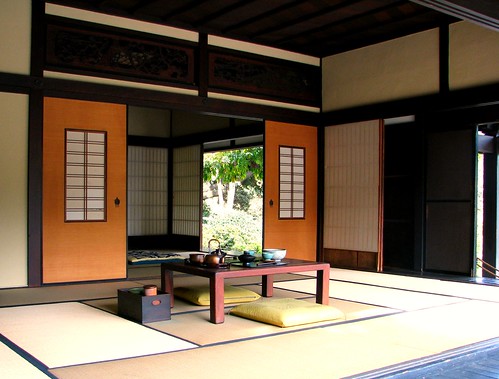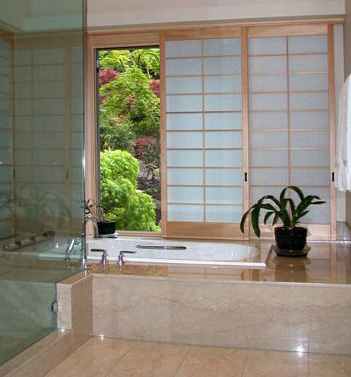Beautiful Japanese Tradisional Home
Japan has both modern and traditional styles of housing. The traditional Japanese house is a beautiful sight to behold. Made of wood and paper, it has an organic feel and look that can be found nowhere else. Individual houses in Japan are either single or two stories.

The traditional Japanese house made of wood is expected to last about twenty years before having to be repaired or rebuilt. Each year it is depreciated, unlike homes here in the United States.


The interior design is what really sets the traditional Japanese house apart from European or American designs. With the exception of the entry way (genkan), the kitchen (daidokoro), the bathing room (sento) and the toilet (benjo), the rooms in a traditional Japanese house does not have a designated use.

A room can easily be a living area, a bedroom, a dining room or any combination. Large rooms are partitioned by fusuma, sliding doors made of wood and thick paper. The paper used for fusuma is called washi. These sliding doors can be removed whenever a larger space is needed.

In large traditional houses, there was one large room, or ima (living space) that could be divided as needed. The smaller rooms like kitchen, bath and toilet were small extensions to one side. Rouka, or wooden-floored hallways, follow the edge of the home. Windows are made of wood and shoji paper, which is thin enough to let the light shine through.

Even modern Japanese houses tend to have one traditional Japanese room, called a washitsu. This room is sparsely if at all furnished, and has tatami mats on the floor. In a traditional Japanese house, this style may be reflected throughout the home. Tatami are thick straw mats covered with stitched, woven rushes. Tatami are smooth and firm enough to walk on, while making a sleeping surface more comfortable than wood or stone.

The genkan is usually a step below the level of the rest of the house. When people enter the home, they leave their shoes in the genkan, pointed toward the door so they only need to slip them on when they are ready to go out. Indoor slippers are often worn inside the house.

The kitchen in most traditional Japanese homes will contain a stove with a very small oven and broiler and an electric refrigerator. Counter space for food preparation and a sink are also located in the kitchen.


The bathing room contains a tub and is often waterproof. An adjacent area is available for showering. The Japanese re-use bathwater, either for other bathers or for washing laundry, so it is important not to dirty the water with soap and dirt. Dirty portions of the body can be washed before stepping into the bath.

The toilet in Japan can either be a Western style toilet, or a squat toilet installed in the floor. The room containing the toilet is often only as large as a typical toilet stall, and the person using this room puts on special slippers while in this room.

Heating in the winter is traditionally supplied by a kotatsu. This is a low table with a heating element on the bottom. During cold weather, people sit around the table and keep the heat contained with a light duvet-type cover that surrounds the table.

Love it...:)
Source: Google
